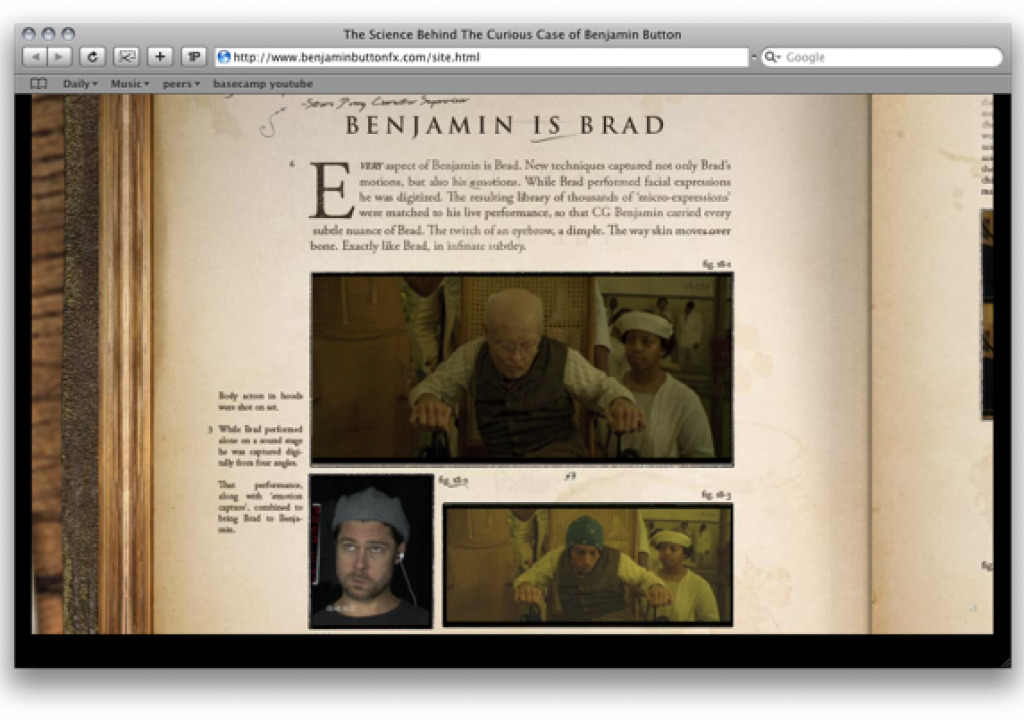
Perhaps in part due to the impending SAG strike and the 30 or so films that have been put on hold as a result, 2008 was a somewhat thin year for tentpole visual effects features; on the VFX Show podcast where I’m a co-host, we had weeks at a time, particularly from late-summer until the holidays, in which very little was released for us to review. Despite that, the work that did show up was strong and the three contenders for the Visual Effects Oscar are all deserving of the award: The Dark Knight for visceral believable action and convincing comic-book additions, Iron Man for going appropriately over the top while obeying the laws of physics and optics.
But the winner should clearly be The Curious Case of Benjamin Buton, because that film did something no film before it has done, and the way in which it was made will resound for years to come. Button is truly the first film to leap across the uncanny valley and present us with a virtual leading man. You may or may not have liked this film – some people noticed its uncanny resemblance to Forrest Gump, and I am on record not having bought its fundamental premise – but just the fact that my quibble was with the premise, not the execution of a reverse-aging Brad Pitt, is one more sign that Digital Domain utterly pulled off a feat that has been anticipated for decades, a grail of sorts.
And that’s not all. A freind recently pointed me to a beautiful site dedicated to the visual effects for the film, which lavishly presents behind the scenes breakdowns of the film’s effects. Among the other many achievements of this film shown on the site are the many locations recreated with extensive matte painting work, including a full aerial recreation of post-war Paris (a city that hasn’t changed so much since then, but which strictly prohibits flying at the altitude the director wanted due to post-9/11 restrctions); the many scenes on board a tugboat, including a battle sequence, in which I guarantee you’ll be surprised to see what was shot on a stage and what was completely digitally fabricated; and last but not least the work of Lola, a studio often left off the credits entirely, to de-age the film’s stars. This type of work is in nearly every other case kept secret; only with a film whose premise is the passage of time can their astonish transformations be brought fully to light.
Some people were profoundly moved by this film, others like me found ourselves wondering if it had been made primarily as a platform for the effects, but few will be seriously surprised when The Curious Case of Benjamin Button brings home the Academy gold later this month.

